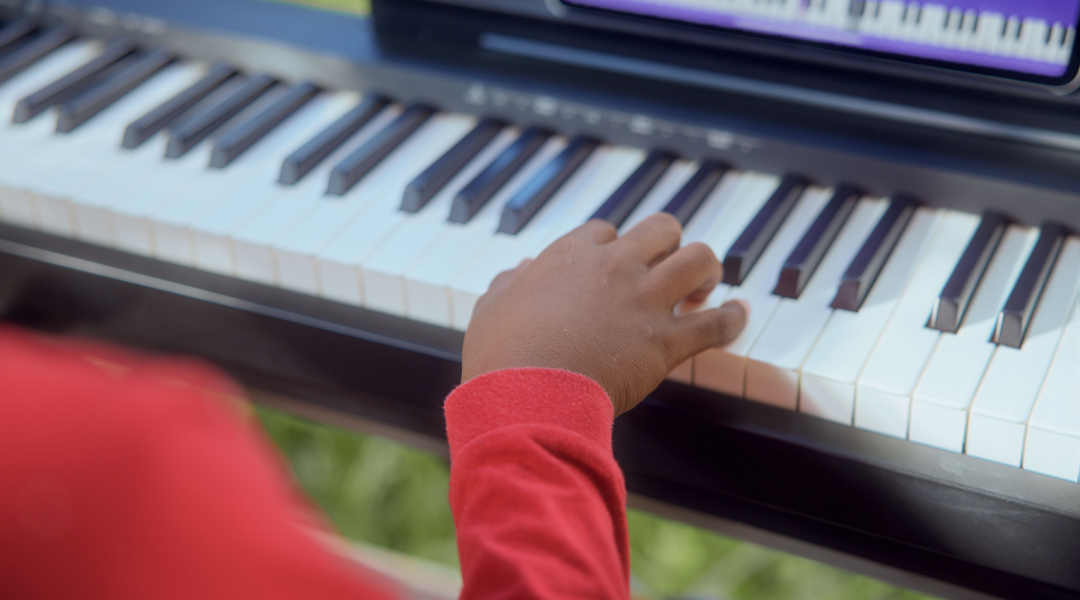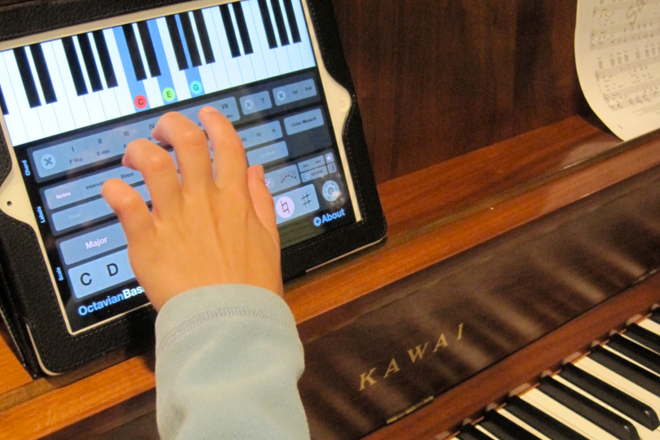How to Sing Beautiful Harmonies

Nailing harmonies requires a trained ear and solid timing. Learn how to skillfully sing them with these helpful tips.
Practically every genre of music harnesses the power of harmonies, from holiday carols and hymns to your favorite pop song. You can recognize harmonies when two or more voices sing in unison. It adds a unique and aggrandizing effect to the music.
When first listening to harmony, you may find them to be complex, angelic echoes. It can seem like creating your own is out of reach. However, just like learning any new skill, learning and improving is much smoother by taking small purposeful steps.
So let’s dive into the majestic world of harmony and build your skill up with these simple steps.

Learn basic music theory.
While it isn’t essential for singing harmonies, knowing basic music theory is an excellent place to start.
Understanding the framework and the essential moving parts of anything grants you insights you wouldn’t otherwise have. For instance, knowing how intervals work or putting chords together makes timing easier, and choosing notes that resonate comes naturally. It can help with the cohesiveness of your harmony.
- Intervals–represent the distance between two notes within a scale.
- Chords–are a series of notes that you play together.
Understanding chords and intervals make creating harmonies much more straightforward. In essence, they’re the same thing.

Sing along to your favorite harmonies.
An easy way to get some practice in is to sing along with your favorite songs! However, we’re not talking about the casual shower singing (although perhaps that could be useful too). Start with simple harmonies to get your bearings. Once you’ve got the hang of it, try writing your own!

Timing.
When it comes to harmony, timing is everything. Part of what makes a harmony create the effect it does is how it is used. You can memorize lyrics by heart and sing pitch-perfect, but none of that matters if your timing is off.
While some music genres implement harmony throughout the song, other styles use harmony at specific times–which means timing your entry is crucial.
But how exactly can you improve your timing?
(How about a bit of…)

Practice.
Practice, practice, and then practice some more! Like any skill you’re honing, the more time you spend engaging with it, the more innate it becomes.
There are many unique ways to practice on your own and with others. If you’re feeling creative and have the tech, record yourself and sing along to your recording. You sharpen your harmony skills, but you’ll also get better at songwriting.
Another great way to practice is to sing with a group. Find other people who like to sing harmonies and practice together. You may even find singers who have a deeper understanding of harmony, which can quickly help you to improve. Not only can singing in a group helps you learn at a faster rate, but it can make your experience more enjoyable.
Pro tip: Stay positive. No matter what activity you engage in, overcoming obstacles is part of the journey. Our worst practice sessions also define our best practice sessions. Maybe you aren’t hitting the pitch or you don’t feel like singing–whatever the issue is, you just have to accept that it’s part of the journey. Keep coming back for more and it’ll pay off.

Join a choir.
A sure-fire way to practice and improve your harmony skills is to join a choir. It’s the perfect environment, and it’s literally designed to help people develop their ability to sing in harmony.
You’ll be able to meet other people who are sharpening their skills, and under your teacher’s guidance, you’re bound to make drastic improvements early on in your lessons. Sharing a space with experts for putting together harmonies is the ideal atmosphere to take your singing to the next level.
Singing and composing vocal harmonies takes time, research, and practice. At times the journey may be frustrating. However, with a dynamic approach, and consistent practice, you’ll get the hang of it.
Harmony is not just for singing. It’s very similar to the chords you play on the piano, and music is a beautiful form of expression where you can mix and match many arts. Another approach to improving vocal harmony and perfecting chords is playing the piano.
Don’t have time to learn everything at once? Try out Simply Piano and see how easy it is to learn to play piano in your free time.









